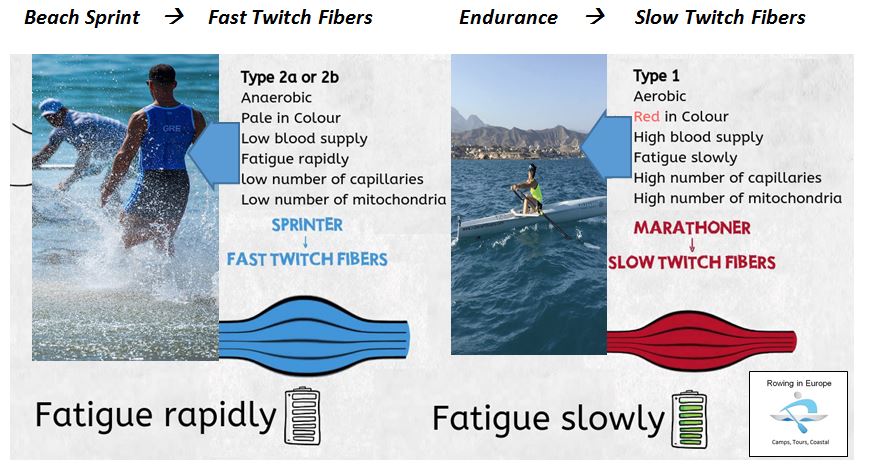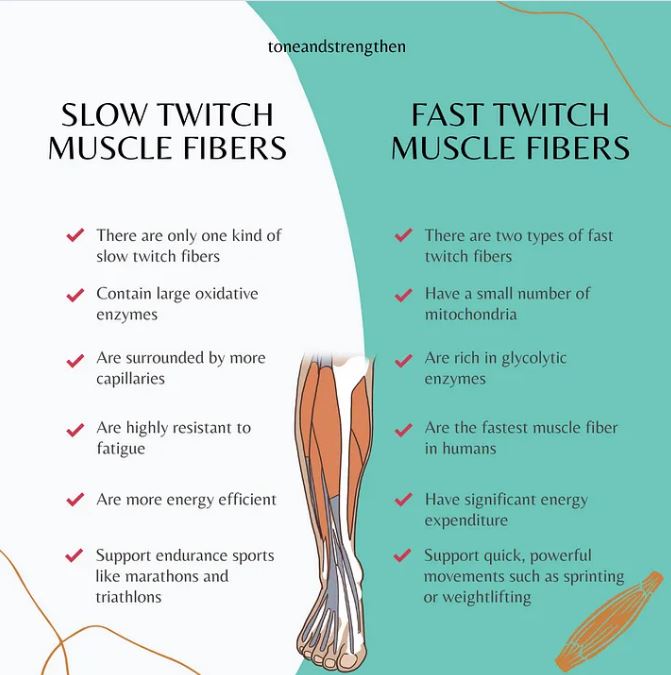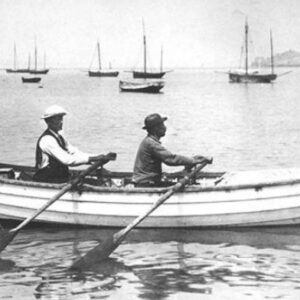Beach Sprint or Endurance muscles? What kind of training do you prefer: You will finally decide if you want to perform well. In 1996 Dr. Izumi Tabata and associates published the results of a study that challenged traditional assumptions about endurance training. These researchers reported that training with a series of short sprints at very fast speeds was just as effective for improving VO2max as traditional endurance training at moderate speeds. High-intensity training, as it was termed, also produced an additional benefit. The group that trained with sprints improved their anaerobic capacity by 28% while the traditional endurance-training group did not improve on this measure.

Combining Beach Sprint training and Endurance training?
Rowing programmes typically contain strength and endurance sessions but research indicates that gains may be compromised. The inclusion of strength training (to gain muscle mass, power and strength) combined with endurance training (to develop aerobic and anaerobic endurance) within a single training programme is known as ‘concurrent training’. Both types of training are typically incorporated into rowing programmes. But is is the best way to include both trainings, are the in conflict? This is what Britisch Rowing (here) said some time ago:
“Resistance exercise typically trains skeletal muscle to generate high force outputs for short duration activities (favouring the development of ‘fast twitch’ fibres). Conversely, endurance training requires individuals to exert relatively low force outputs while maintaining those outputs over long durations (favouring ‘slow twitch’ fibres). At a molecular level, resistance training increases protein synthesis (muscle building) for up to 72 hours – however, endurance exercise immediately inhibits important processes responsible for increasing protein synthesis. So, completing an endurance session shortly after a resistance session dampens protein synthesis and therefore compromises muscle growth.
The adaptations to the muscle fibre for resistance and endurance exercise are vastly different. A further explanation suggests that endurance training causes residual fatigue and reduces the capacity of muscles to generate force. So, if you then do resistance training with such fatigue, the quality of your training and amount of load may be compromised. This may lead to a decline in strength development over a training cycle.”
Beach Sprint or Endurance muscles:

Train your endurance in winter: Slow-twitch, or Type I, Muscle Fibers:
- Slow-twitch fibers contain mitochondria, the organelles that use oxygen to help create adenosine triphosphate (ATP), which is the chemical that actually fuels muscle contractions, and are considered aerobic.
- Slow-twitch fibers are also called red fibers because they contain more blood-carrying myoglobin, which creates a darker appearance.
- Because they can provide their own source of energy, slow-twitch fibers can sustain force for an extended period of time, but they are not able to generate a significant amount of force.
- Slow-twitch fibers have a low activation threshold, meaning they are the first recruited when a muscle contracts. If they can’t generate the amount of force necessary for the specific activity, the fast-twitch muscle fibers are engaged.
- The tonic muscles responsible for maintaining posture have a higher density of slow-twitch fibers.
- Steady-state endurance training can help increase mitochondrial density, which improves the efficiency of how the body uses oxygen to produce ATP.
As you can see, slow-twitch fibers have specific characteristics for how they function, which means they can be trained to be more aerobically efficient with the proper exercise program.
Train now- win your endurance race in Spring. Techniques for Endurance Training, Slow-Twitch-Fibers:
- Exercises that feature sustained isometric contractions with little-to-no joint movement keep the slow-twitch muscle fibers under contraction for an extended period of time. This can help improve their ability to utilize oxygen to produce energy. Examples include the front plank, the side plank and the single-leg balance.
- Resistance-training exercises using lighter weights with slower movement tempos for higher numbers of repetitions (i.e., more than 15) can engage the slow-twitch fibers to use aerobic metabolism to fuel the activity.
- Circuit training, which involves alternating from one exercise to the next with little-to-no rest while using lighter weights, can be an effective way to challenge slow-twitch fibers.
- Body-weight exercises for higher numbers of repetitions can be an effective way to challenge aerobic metabolism, which helps improve the efficiency of slow-twitch fibers.
- hen working with body-weight only or lighter amounts of resistance, use shorter rest intervals of approximately 30 seconds between sets to challenge the slow-twitch fibers to use aerobic metabolism to fuel the workout.






